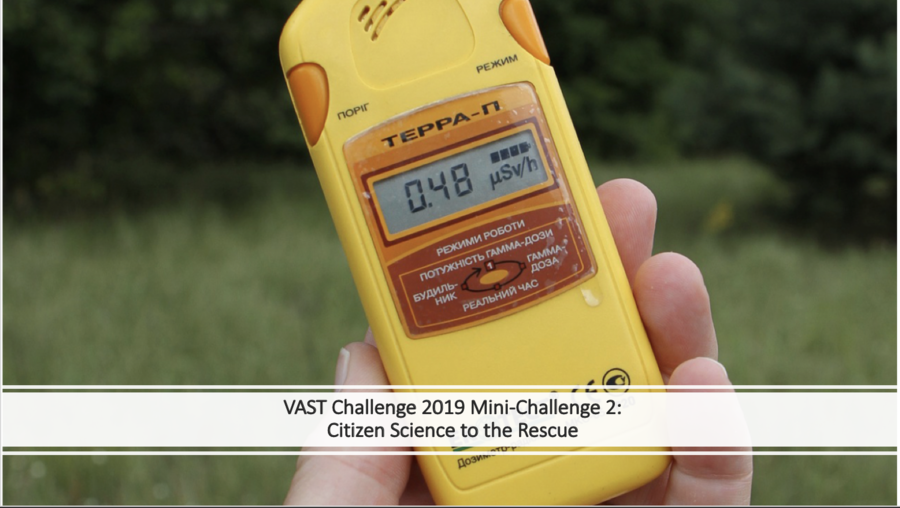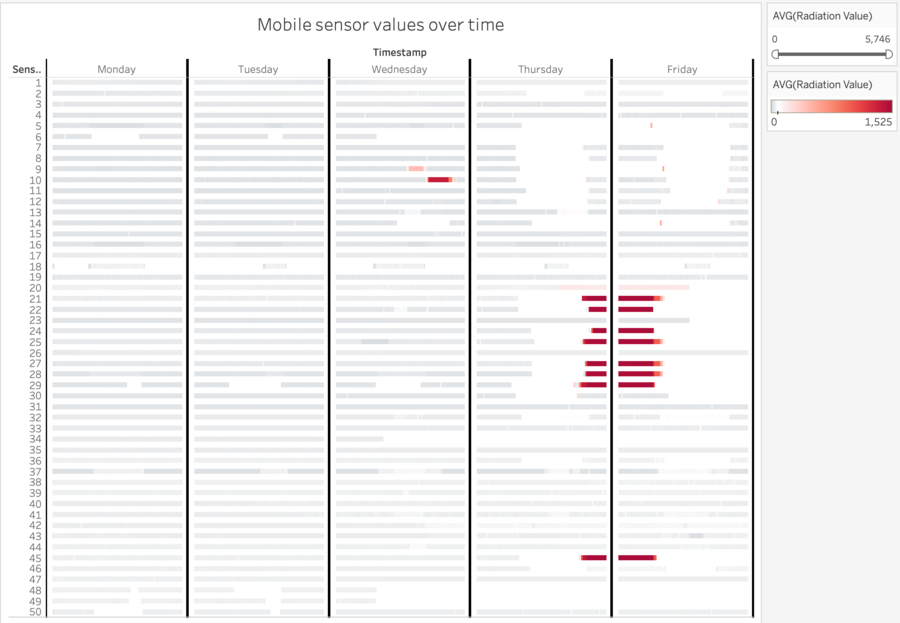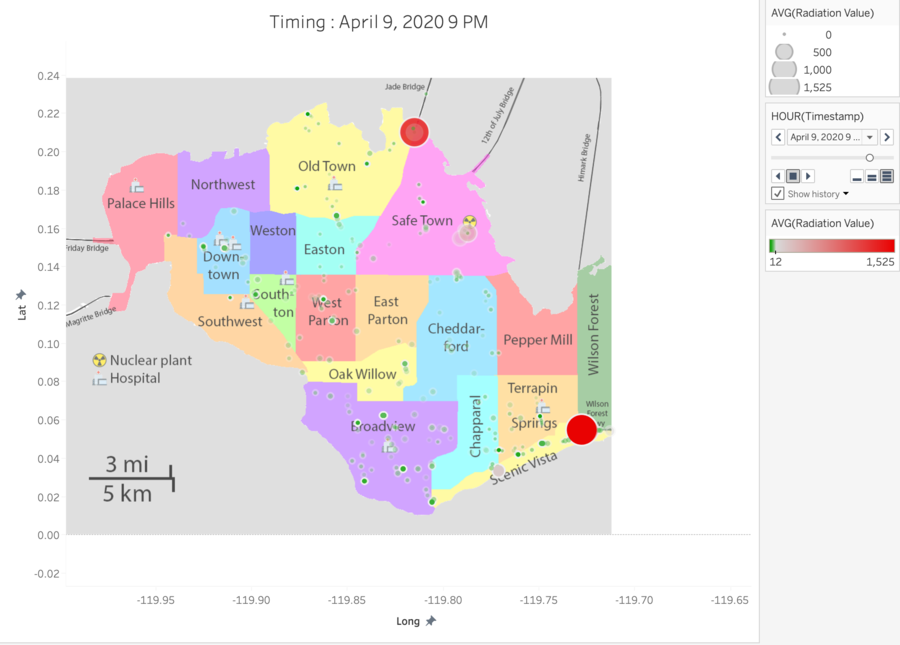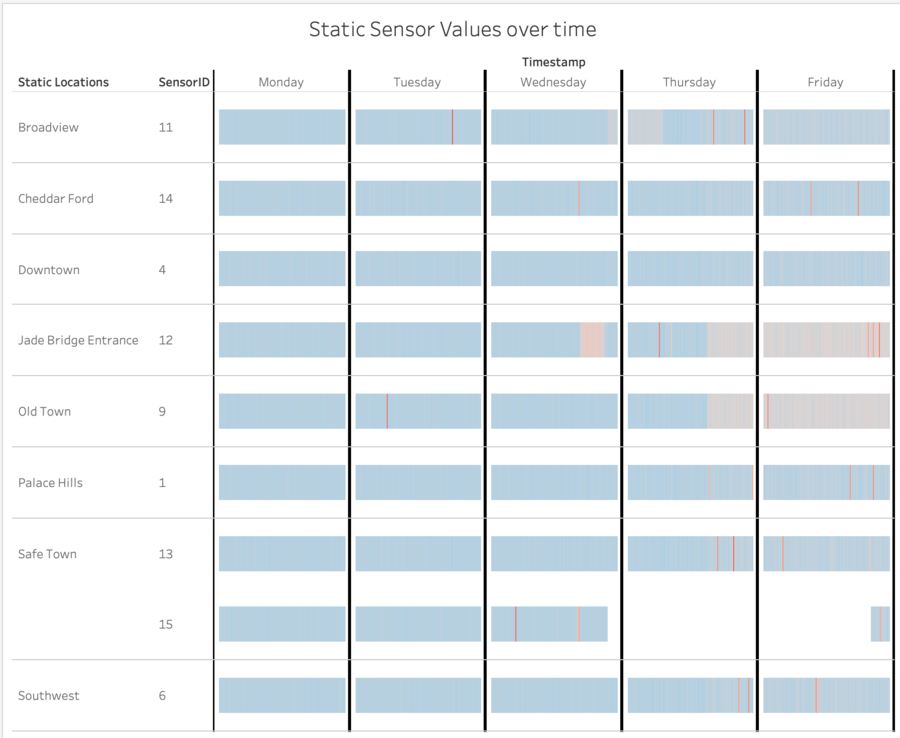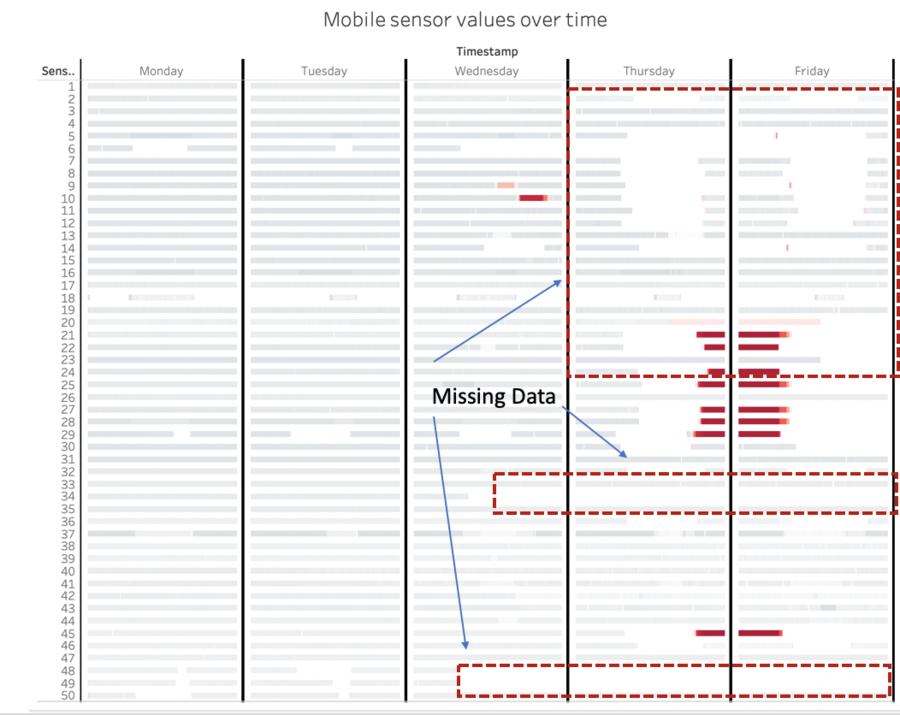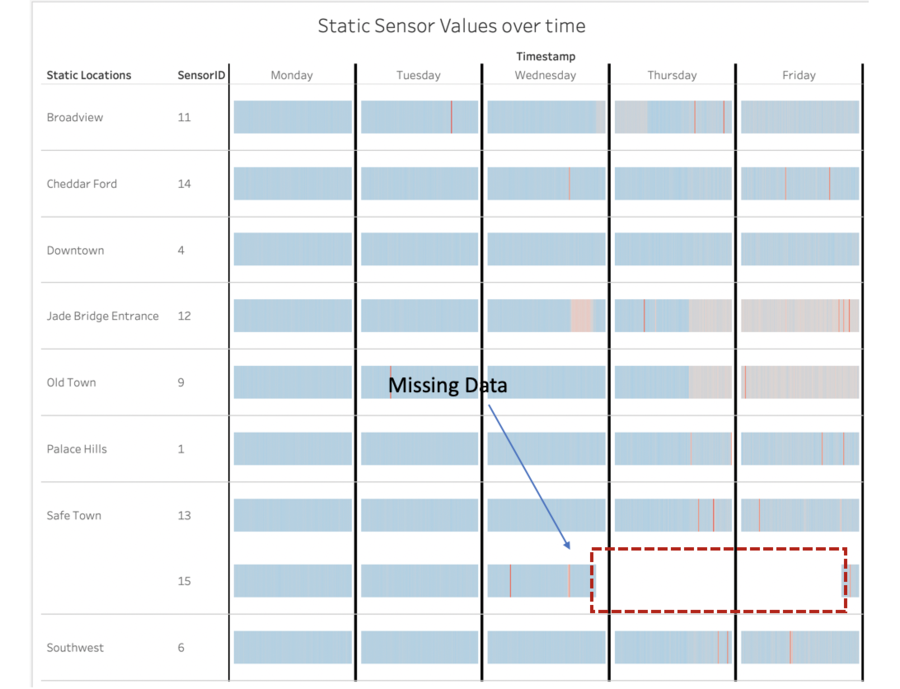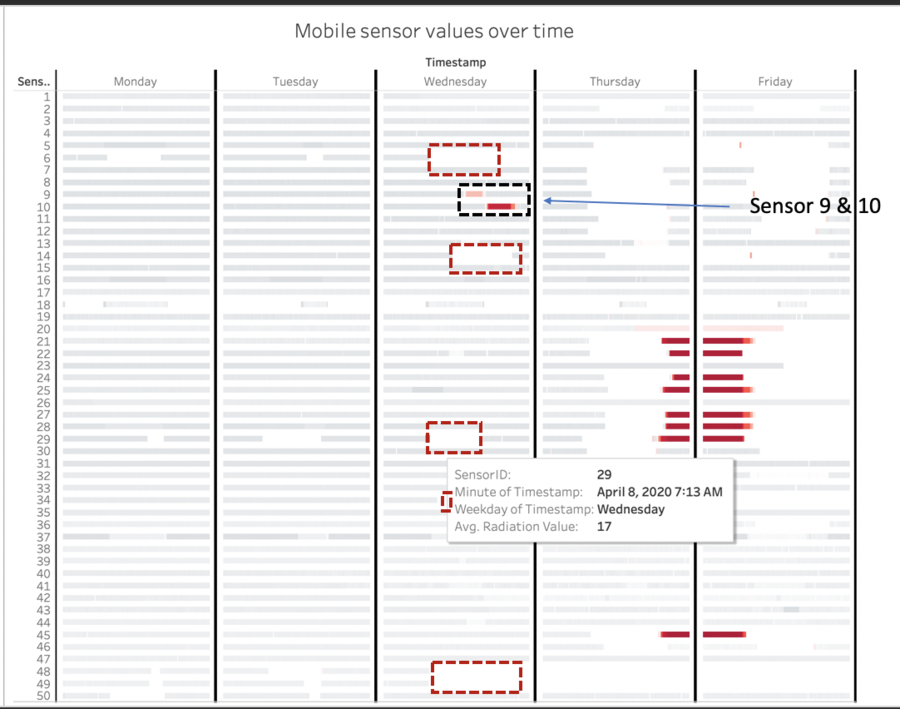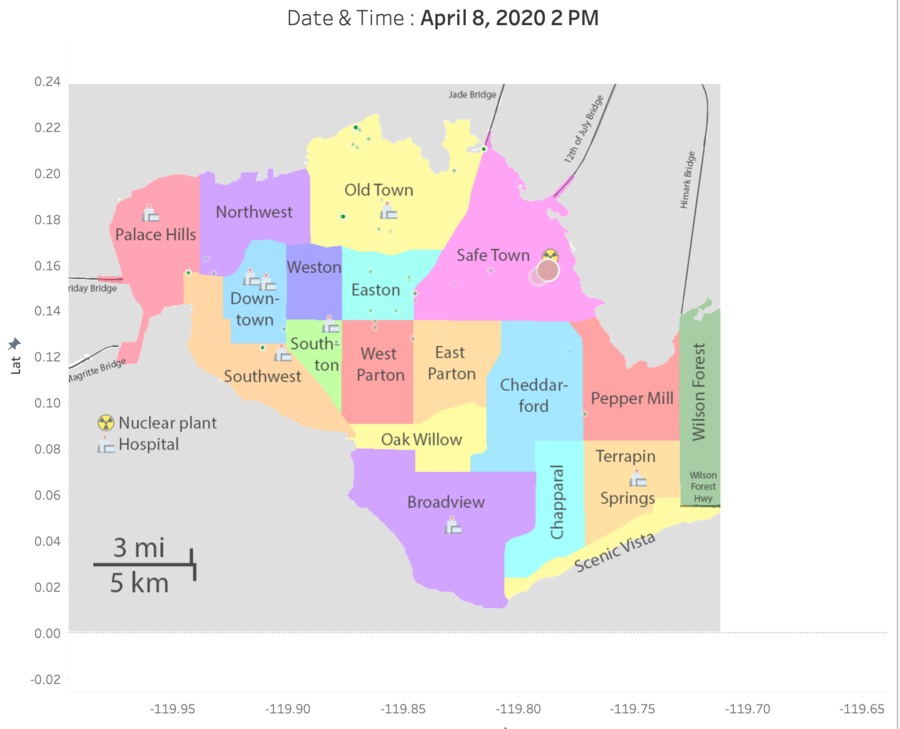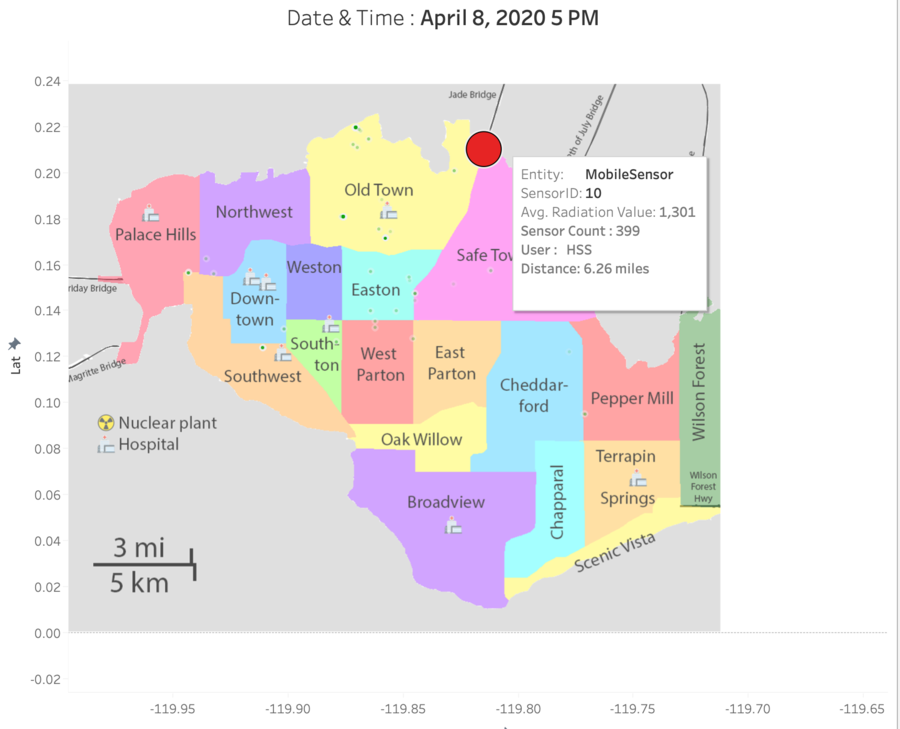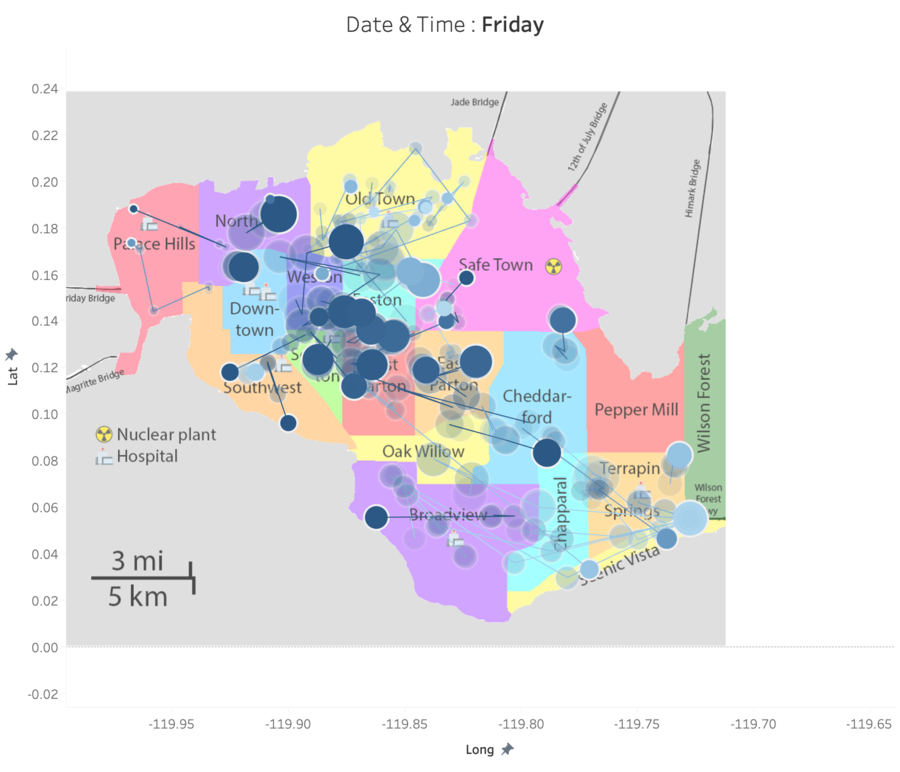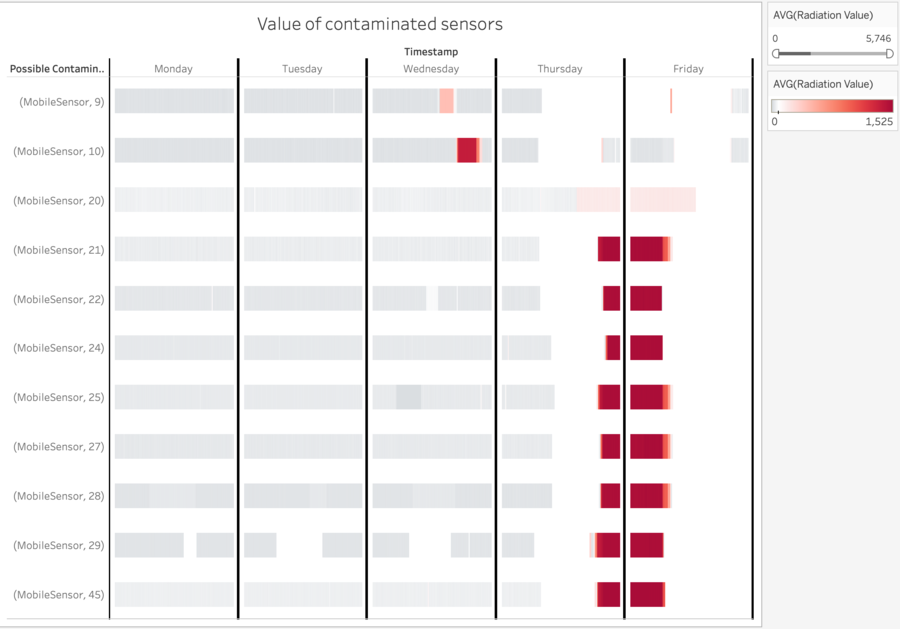Difference between revisions of "IS428 AY2019-20T1 Assign Foo Yong Long RiskAnalysis"
Ylfoo.2017 (talk | contribs) (/* Use visual analytics to represent and analyze uncertainty in the measurement of radiation across the city. Compare uncertainty of the static sensors to the mobile sensors. What anomalies can you see? Are there sensors that are too uncertain to trust...) |
Ylfoo.2017 (talk | contribs) |
||
| Line 96: | Line 96: | ||
Subsequently, there is an increase in radiation levels among radiation levels from 8th April onwards and more sensors stopped functioning. | Subsequently, there is an increase in radiation levels among radiation levels from 8th April onwards and more sensors stopped functioning. | ||
| + | |||
| + | |- | ||
|- | |- | ||
| + | <br> | ||
| + | ===Which regions of the city have greater uncertainty of radiation measurement? Use visual analytics to explain your rationale. What effects do you see in the sensor readings after the earthquake and other major events? What effect do these events have on uncertainty?=== | ||
| + | ---- | ||
<br> | <br> | ||
<p> | <p> | ||
| − | <div style="background: #364558; padding: 15px; font-weight: bold; line-height: 0.3em; text-indent: 0px;font-size:20px"><font face="Arial" color=#fbfcfd><center>''' | + | <div style="background: #364558; padding: 15px; font-weight: bold; line-height: 0.3em; text-indent: 0px;font-size:20px"><font face="Arial" color=#fbfcfd><center>'''Overall Region Uncertainty'''</center></font></div> |
| + | |||
| − | |||
| | | | ||
3 | 3 | ||
| Line 110: | Line 115: | ||
'''Static Sensors''' | '''Static Sensors''' | ||
| − | The values from static sensors are more stable | + | The values from static sensors are more stable compared to mobile sensors due to the coverage. |
'''Limitation: Scope of coverage''' | '''Limitation: Scope of coverage''' | ||
Revision as of 17:22, 13 October 2019
Contents
- 1 Question 1
- 2 Question 2
- 2.1 Use visual analytics to represent and analyze uncertainty in the measurement of radiation across the city. Compare uncertainty of the static sensors to the mobile sensors. What anomalies can you see? Are there sensors that are too uncertain to trust?
- 2.2 Which regions of the city have greater uncertainty of radiation measurement? Use visual analytics to explain your rationale. What effects do you see in the sensor readings after the earthquake and other major events? What effect do these events have on uncertainty?
Question 1
Visualize radiation measurements over time from both static and mobile sensors to identify areas where radiation over background is detected. Characterize changes over time.
| Step | Description |
|---|---|
|
1 |
Mobile Sensors |
|
2 |
Static Sensors |
|
3 |
For the visualization of sensors over time, a Gantt chart view was created to analyze the values of radiation of both sensors. In general, places of concern include Old Town, Jade Bridge, and the southeast region which include Terrapin Springs, Wilson Forest and Scenic Vista. The time pills are set to continuous with "minutes" as the variable as the values are measured in counts per minute. The readings from mobile sensors support Static Sensors, which shows a spike in radiation on areas like Old Town, Jade Bridge, and the southeast region. |
Question 2
Use visual analytics to represent and analyze uncertainty in the measurement of radiation across the city. Compare uncertainty of the static sensors to the mobile sensors. What anomalies can you see? Are there sensors that are too uncertain to trust?
Which regions of the city have greater uncertainty of radiation measurement? Use visual analytics to explain your rationale. What effects do you see in the sensor readings after the earthquake and other major events? What effect do these events have on uncertainty?
| Step | Description |
|---|---|
|
1 |
Mobile Static There were missing data for both the Static and Mobile Sensors. |
|
2 |
The earthquake might have happened around 7.10am on 8th April. A bunch of mobile sensors lost connectivity on the morning of 8th April around 7.16 am - 7.30 am. This might have caused a radiation leak at the nuclear plant. Shortly afterward from 1.26 pm to 4.27 pm, Mobile Sensor 9 which is driving beside the nuclear plant (Distance from plant = 0.62 miles), detected an increase in radiation level to 1301. At 5 pm, there was a surge in radiation levels at the entrance of the Jade bridge (Distance from plant = 6.26 miles). Subsequently, there is an increase in radiation levels among radiation levels from 8th April onwards and more sensors stopped functioning. |
|
3 |
Static Sensors The values from static sensors are more stable compared to mobile sensors due to the coverage. Limitation: Scope of coverage Static sensors only cover 8 out of 19 areas, missing out on crucial areas such as the southwest region which contain contaminated areas as reported by the mobile sensors. Furthermore, sensors 13 and sensor 15 are too abnormal to trust. Despite having reported high radiation levels after 8th April, these sensors remain stagnant with little or no spike despite being only 2.5 and 0.86 miles respectively from the radiator. |
|
4 |
Mobile Sensors Mobile sensors reported greater fluctuation in results as compared to static sensors, with values ranging from 0 to 1525.However, they cover more areas as compared to static sensors which explains the deviation. However, they too present certain risks and limitations despite being able to cover more areas. Limitation: Scope of coverage As seen on the diagram above, the various counts of mobile sensors are denominated by blue. History Trails and Marks are set and you can see that the mobile sensors are clustered greatly into high activity towns such as Weston, Easton ,Southton , NorthTon and West Parton. The only ventured into the south western areas which contained high radiation values during Friday. With a lack of sample size in these areas, there is greater uncertainty of radiation measurement in these areas as values might be influenced by outliers caused by broken sensors. Limitation: Inconsistency of data Mobile sensors presents greater loss of data compared to static sensors due to a higher chance of wear and tear. Furthermore, since they are stuck onto cars, data connectivity might be loss throughout the journey. Furthermore, once a car is contaminated, the sensor will only reflect the value of radiation coming from the car and not the surrounding area. This can be seen from the graph above which shows mobile sensors 9,10,20,21,22,24,25,27,28,29 and 45 having lots of missing data or inflated radiation values after the earthquake. |
